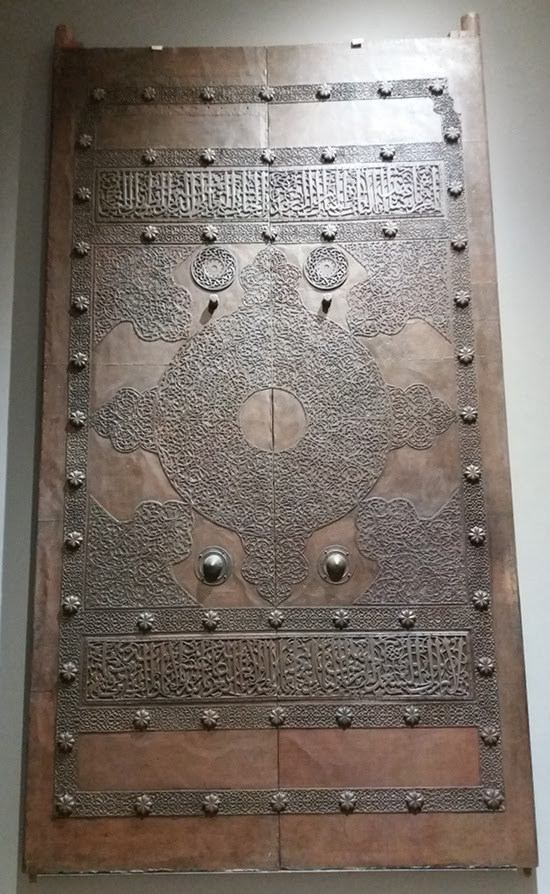Masterpieces of Islamic Art in Cairo

Mamluk era mosque lamp from 15th century Cairo.
The tradition of hand painted mosque lamps continues
to this day, even though they now contain electric lights
Last week I discussed some of Tutankhamun’s treasures in Cairo’s National Museum. That museum is an amazing collection of items from ancient Egypt. The city’s other great museum, the Museum of Islamic Art, focuses on the Muslim period and has one of the greatest collections of its kind in the world.

This 18th century Ottoman device was used by travelers to find the
direction of Mecca from anywhere in the Middle East and Europe
After the Muslims finished conquering Egypt in 642 AD, they set up a series of dynasties that patronized the arts and built impressive mosques, madrasas, and palaces. Styles changed over the years to create several distinct forms of art that are all traced and described in the museum. A visit to the museum should be high on the list of anyone interested in the culture of the country. It has the advantage of being less crowded than the National Museum, but be careful you don’t trip over the Egyptian art students sitting on the floor sketching!

Silver plated wooded door, one of the largest of its kind
in the world, from the time of Muhammad Ali, 19th century

Safavid era anatomy textbook, covering blood circulation,
digestion, the spinal column, and the rib cage. Written in the
17th century. The Safavid dynasty of Iran was responsible for
the country’s greatest architectural achievements, especially
the beautiful historic center of Isfahan

Safavid magic shirt from Iran, 18th century. The geometric designs
gave blessings and protection to the wearer. An Egyptian art student
who was sketching this was entranced with getting all the lines right.
He was doing a good job!

Gravestones form Egypt, 12th century. I like how the engraver
used natural curves in the stone for added effect

Ceramic dish showing stick fighting, Fatimid era Egypt,
12th century. The Fatimid dynasty was one of the many periods
when human representation was considered OK. In many
times and places, it was even considered all right to create
depictions of the prophet Muhammad

Wooden door with copper revetment. Mamluk era Egypt,
13th century. What’s interesting about this door is that as seen
from a distance it looks like it has a floral or vegetative design,
common in Islamic art, but if you look more closely. . .

. . .you see that the design is made up of tiny interlaced animals.
The ancient Celts would have been impressed by this!

Glass goblet from the Abbasid era, made in Egypt in the 8th century.
It survived undamaged for more than 1,200 years until it was
shattered when when the police headquarters across the street
was hit by a massive suicide car bomb on January 24, 2014.
Six people were killed and dozens injured. The explosion blew
out the windows of the museum and destroyed 179 artifacts.
After painstaking restoration, the museum staff
were able to fix all but ten of them.

The kid’s activity section shows off the coloring skills of Cairene
schoolchildren. Note the figure of Christ on the bottom. I don’t know
if the kid who colored this was a Coptic Christian or a Muslim. Christ is
honored as a prophet in Islam, although he is not considered to be divine
More pictures of Egypt next week, plus many more on my Instagram account!
Sean McLachlan is the author of the historical fantasy novel A Fine Likeness, set in Civil War Missouri, and several other titles. His novel set in Tangier, The Last Hotel Room, is on sale for 99 cents through the Amazon US Kindle store through April 3. Find out more about him on his blog and Amazon author’s page.
Just wanted to say (again, if I’ve said it before) that I’ve been really enjoying these posts.